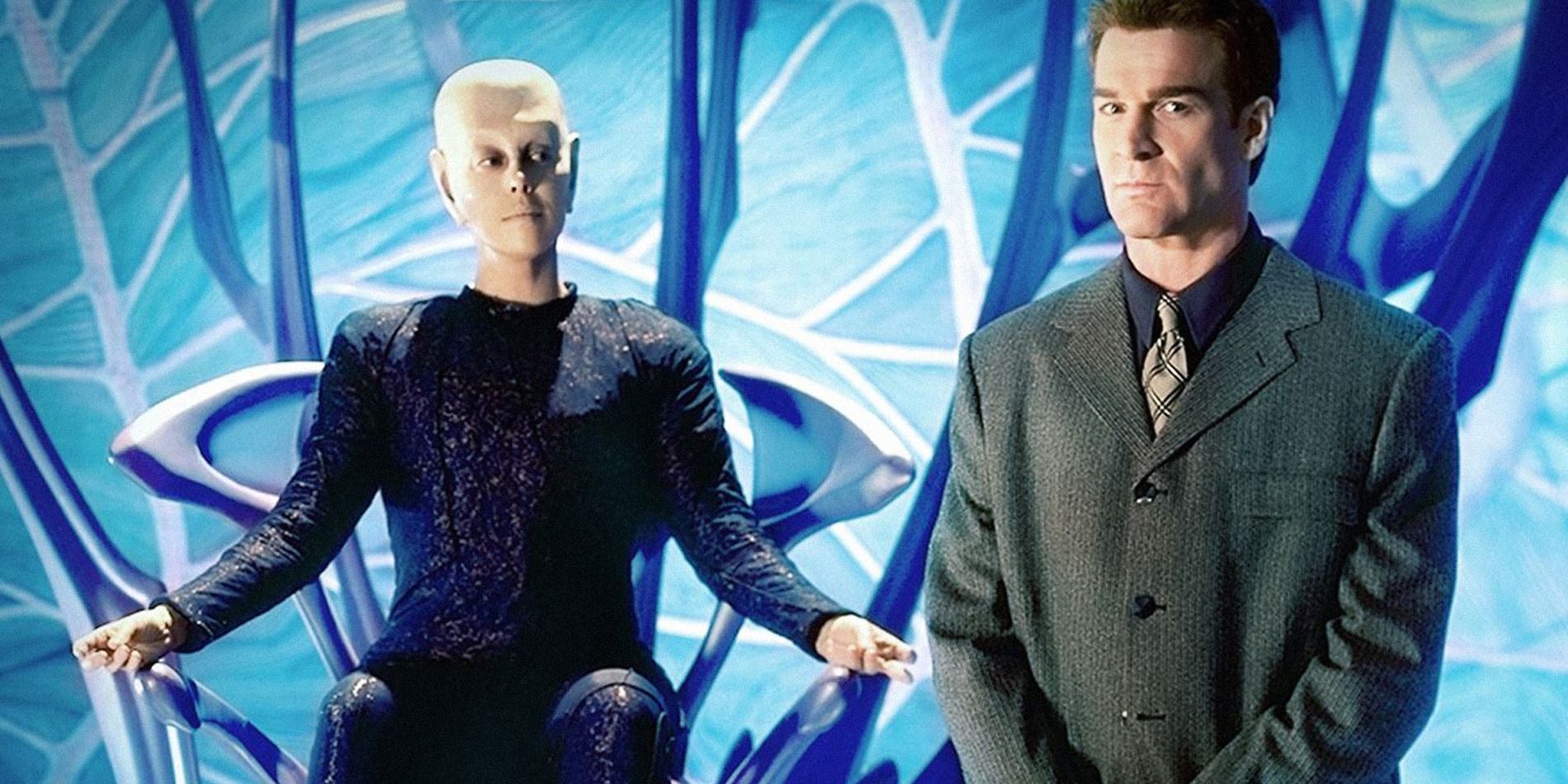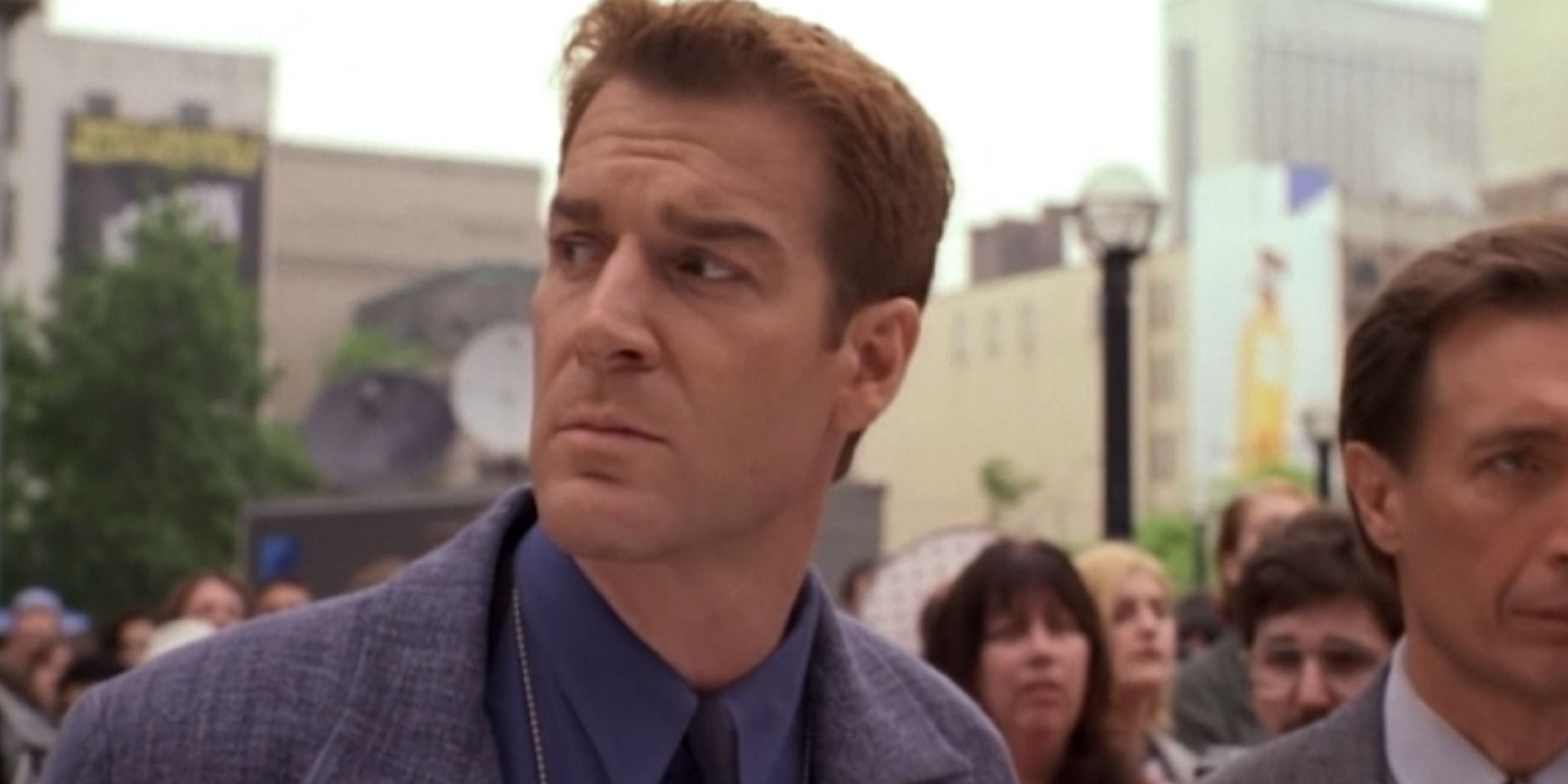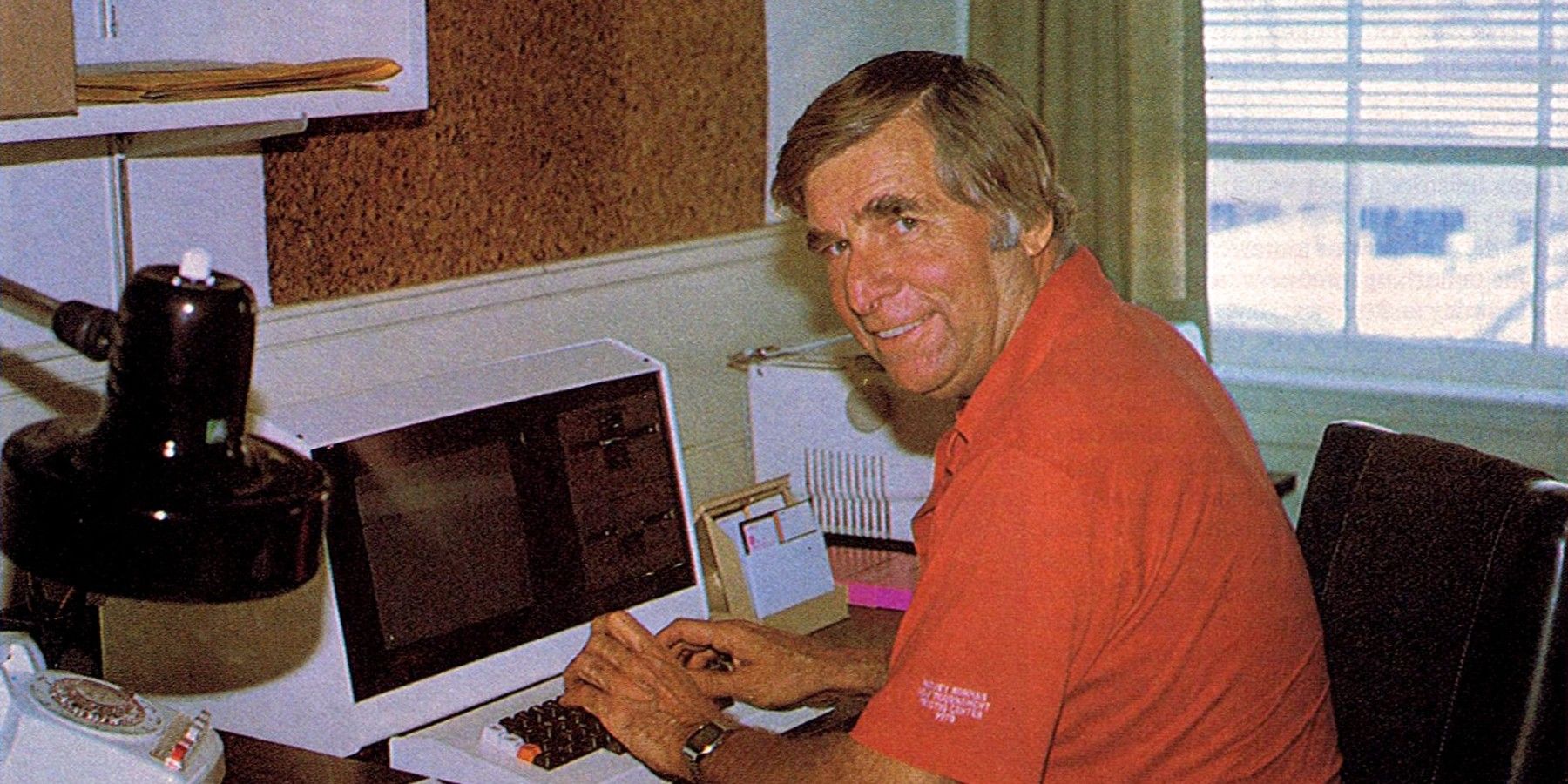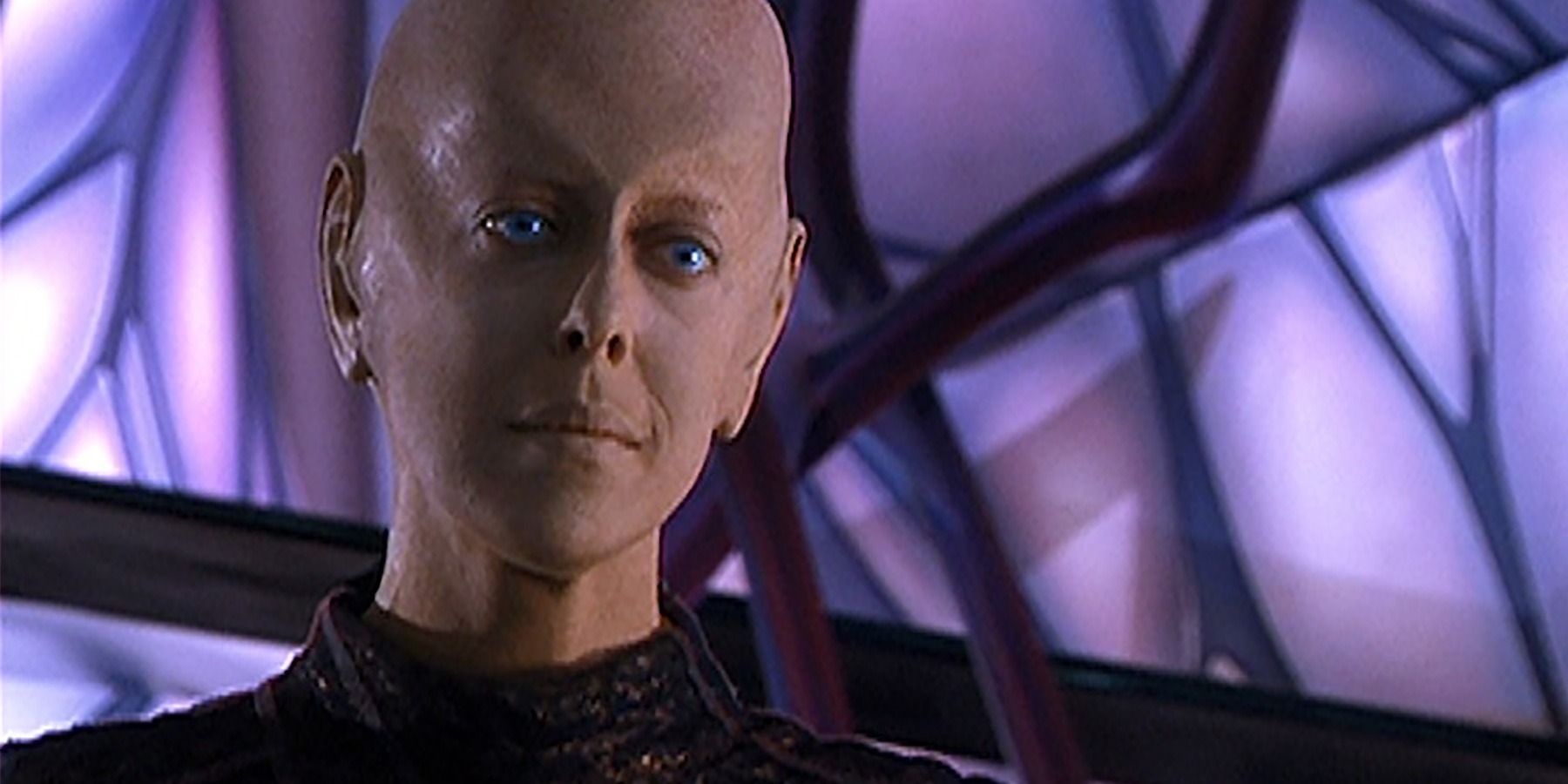
Uncover the Hidden Gems: Exploring Gene Roddenberry's Lesser-Known Sci-Fi Universe

Uncover the sci-fi brilliance of Gene Roddenberry's hidden gem, Earth: Final Conflict, as it captivates Star Trek fans with its intriguing storyline and compelling exploration of humanity's encounter with an enigmatic alien race
Gene Roddenberry is widely known for his work on Star Trek, but there is another hidden gem in his repertoire: Earth: Final Conflict. While this TV series may have been forgotten by many, it should not be underestimated. In fact, it deserves recognition equal to its more popular counterpart.
Based on Roddenberry's own ideas, Earth: Final Conflict presents an enthralling story centered around the Taelons, a race of extraterrestrial beings who come to Earth with supposedly good intentions. The premise is captivating, filled with both awe and apprehension. Fans of Roddenberry's work eagerly embraced this new universe, finding excitement in its fresh and intriguing concept.
What is Earth: Final Conflict about?
In the first season of Earth: Final Conflict, a significant period of three years passes from the arrival of the apparently benevolent Taelons to the unsettling revelation of their true intentions. This ancient extraterrestrial civilization, assuming physical forms to cater to the delicate emotions of humans, named themselves the "Companions," swiftly offering solutions to all the problems afflicting the planet.
Commander William Boone (played by Kevin Kilner) is a man ensnared in the complex web of Taelon manipulation. He finds himself torn between conflicting loyalties and growing suspicion. Drawn into the Taelons' inner circle as a Protector, Boone's doubts intensify, leading him towards the hidden resistance movement, where humanity's resistance boils beneath the surface like an underground inferno. He willingly embraces the perilous role of a double agent in a complex game of chess, where trust is scarce and deceit thrives.
Boone finds himself caught in a moral dilemma as more evidence surfaces, forcing him to question his allegiances. Should he use his power to dismantle the Taelons' control over humanity, or should he take on the difficult role of a mediator, attempting to establish a fragile peace? Amidst this struggle, one Taelon named Da'an captures his attention with seemingly noble intentions, and a bond of camaraderie begins to develop, blurring the boundaries of loyalty and trust.
Just as the Taelons appear to be the biggest threat to Earth, a cosmic storm of epic proportions erupts, revealing the emergence of a sinister and mysterious alien race called the Atavus. This new enemy poses a danger so grave that it threatens the very existence of all species. With alliances constantly shifting and battles for survival intensifying, all factions brace themselves for the impending collision of these different species.
How was Earth: Final Conflict developed?
After the original Star Trek concluded in 1969, Roddenberry set out to explore new opportunities. He presented his ideas for a science fiction series named Battleground: Earth to various TV networks, hoping to bring his unique vision to fruition. Twentieth Century Fox expressed interest, but unfortunately, Roddenberry's busy schedule and extensive travels caused the project to be put on hold.
Tragically, Roddenberry passed away in 1991, leaving Battleground: Earth unrealized. However, in the mid-1990s, his widow, Majel Barrett-Roddenberry, took charge of the project with unwavering determination. She revived the concept, renaming it Earth: Final Conflict, and enlisted Tribune Entertainment as the production company.
Despite the show's title change, Earth: Final Conflict successfully overcame the challenge of gaining recognition. It emerged as a captivating blend of hope and treachery, carrying on Roddenberry's legacy and building anticipation for the ultimate clash awaiting Earth. The series aimed to engage audiences, enticing them to immerse themselves in its compelling storyline.
How Does Earth: Final Conflict end?
Unfortunately, the creators of Earth: Final Conflict disrupted the well-established narrative by abruptly replacing the Taelons with the Atavus. This captivating series initially captivates audiences with its deliberate pacing. However, it ultimately falls short by raising expectations and then leaving viewers uncertain and unsatisfied.
The decision to condense the Taelons into a smaller group of characters and transform them into the Atavus drastically changes the direction of the series. The Taelons, who were originally portrayed as Earth's allies, are now replaced by the Atavus, who wreak havoc on the unsuspecting planet. These Atavus are depicted as insatiable energy vampires, preying on the life force of humanity.
The complex storyline of Earth: Final Conflict becomes even more convoluted with frequent changes in the cast. Just as viewers become accustomed to the evolving dynamics, the show introduces new villains in later seasons. This sudden shift undermines much of the intrigue that once surrounded the series, leaving a noticeable void.
The Atavus storyline persists throughout two entire seasons before the conclusion of Earth: Final Conflict. Over the course of a five-season journey from October 6, 1997, to May 20, 2002, the show establishes an extraordinary universe that surpasses others in its ability to transcend the television landscape of its era. However, the series' untimely conclusion leaves a sense of untapped potential.
The success of Earth: Final Conflict continues to be a topic of discussion among loyal Star Trek fans. However, there is one aspect that garners universal acclaim: the portrayal of the Taelons. These extraterrestrial beings, portrayed exclusively by women, surpassed traditional gender norms. Their existence transcended the binary concept of male or female, offering a nuanced exploration of gender nonconformity - a territory largely uncharted in television during that time. Despite being referred to using masculine pronouns, the Taelons introduced the idea of non-binary representation, gently nudging society towards a greater acceptance of diverse gender expressions.
Had Roddenberry himself witnessed the realization of his vision, Earth: Final Conflict undoubtedly would have taken a different trajectory. However, dismissing it as a futile endeavor would oversimplify the situation. For those familiar with Roddenberry's body of work, his creations possess a timeless quality. It is a legacy that will surpass the insignificance of our mortal existence, radiating beyond the boundaries of our comprehension.
















